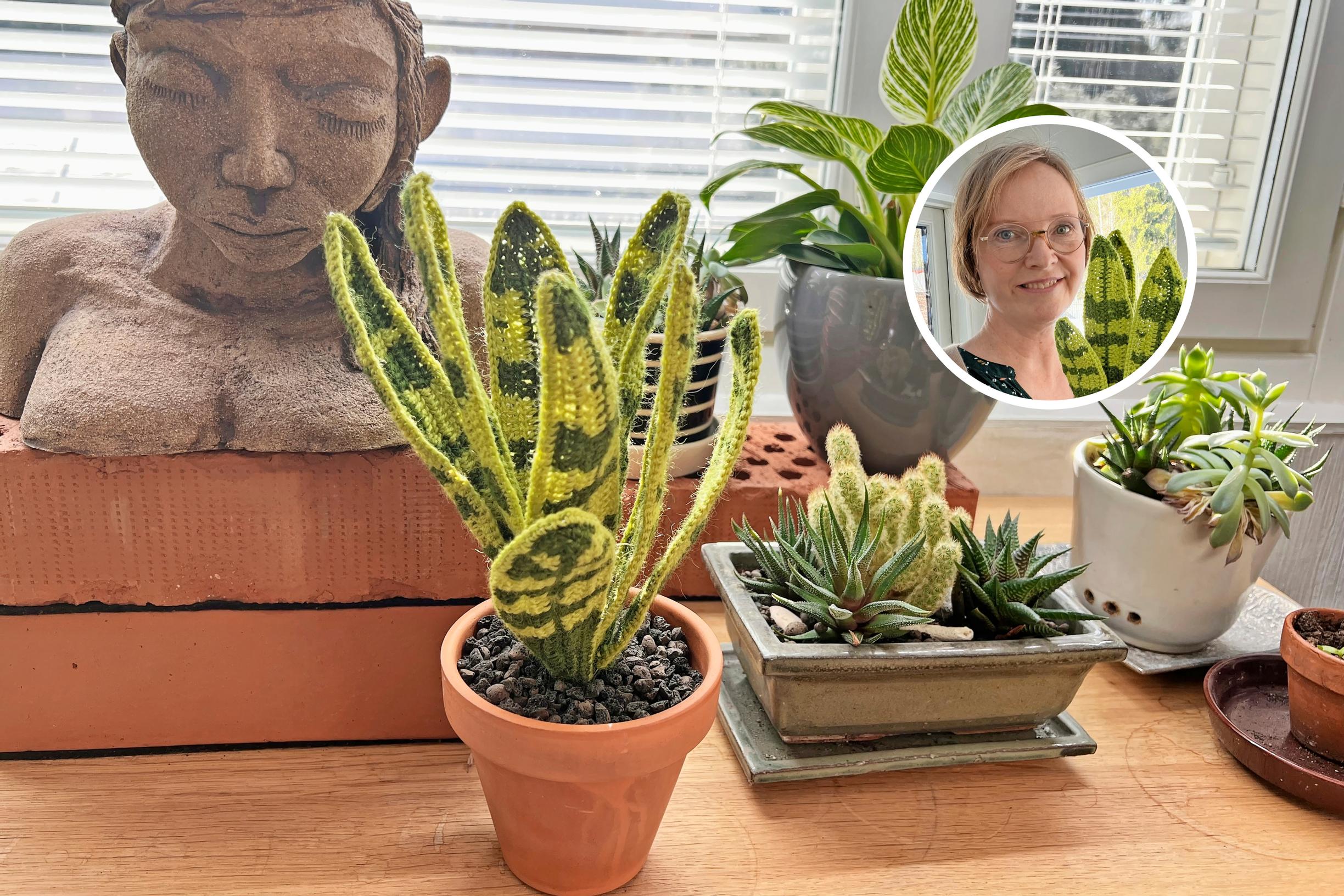
Wonderful crocheted houseplants—“Sometimes, for a split second, I’m about to water them too”
Tiina learned to crochet plants with the help of YouTube tutorials. Once you know the basics, crocheting is a creative, free-form process, as there's room for endless variation when creating the leaves.
Tiina, how did you come up with the idea to crochet plants?
I saw crocheted plants on social media and thought making my own would be fun. I found instructions on YouTube by searching for “crochet plant.” They’re not really suitable for complete beginners, because there aren’t clear written instructions, and you also have to work with wire alongside regular yarn.
The tutorial videos are detailed, and it can take about an hour to make just one leaf. As I watch, I jot down the stitch counts, then use my notes for the rest of the leaves. I’ve crocheted a monstera, a Chinese money plant, and a large snake plant.
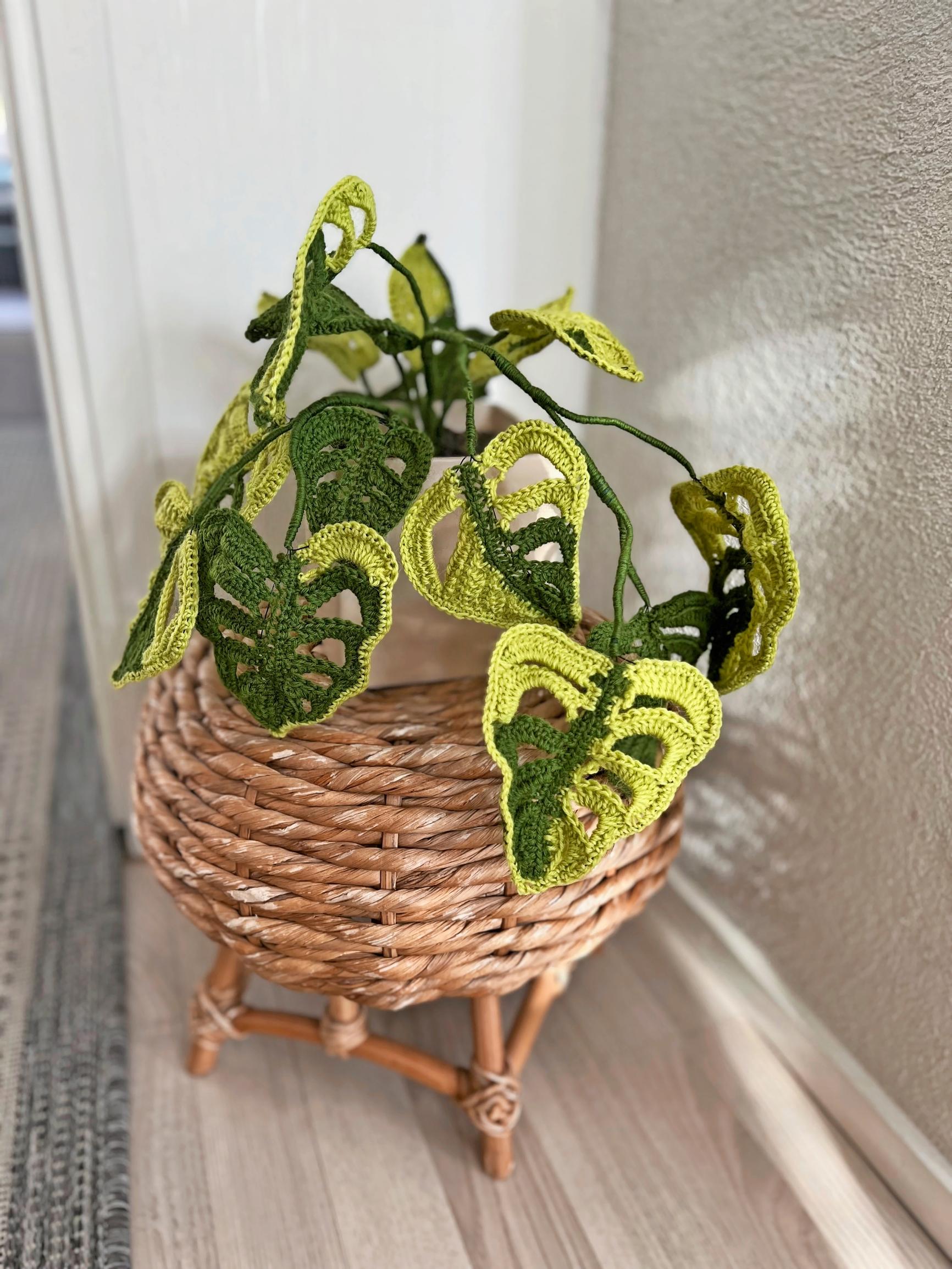
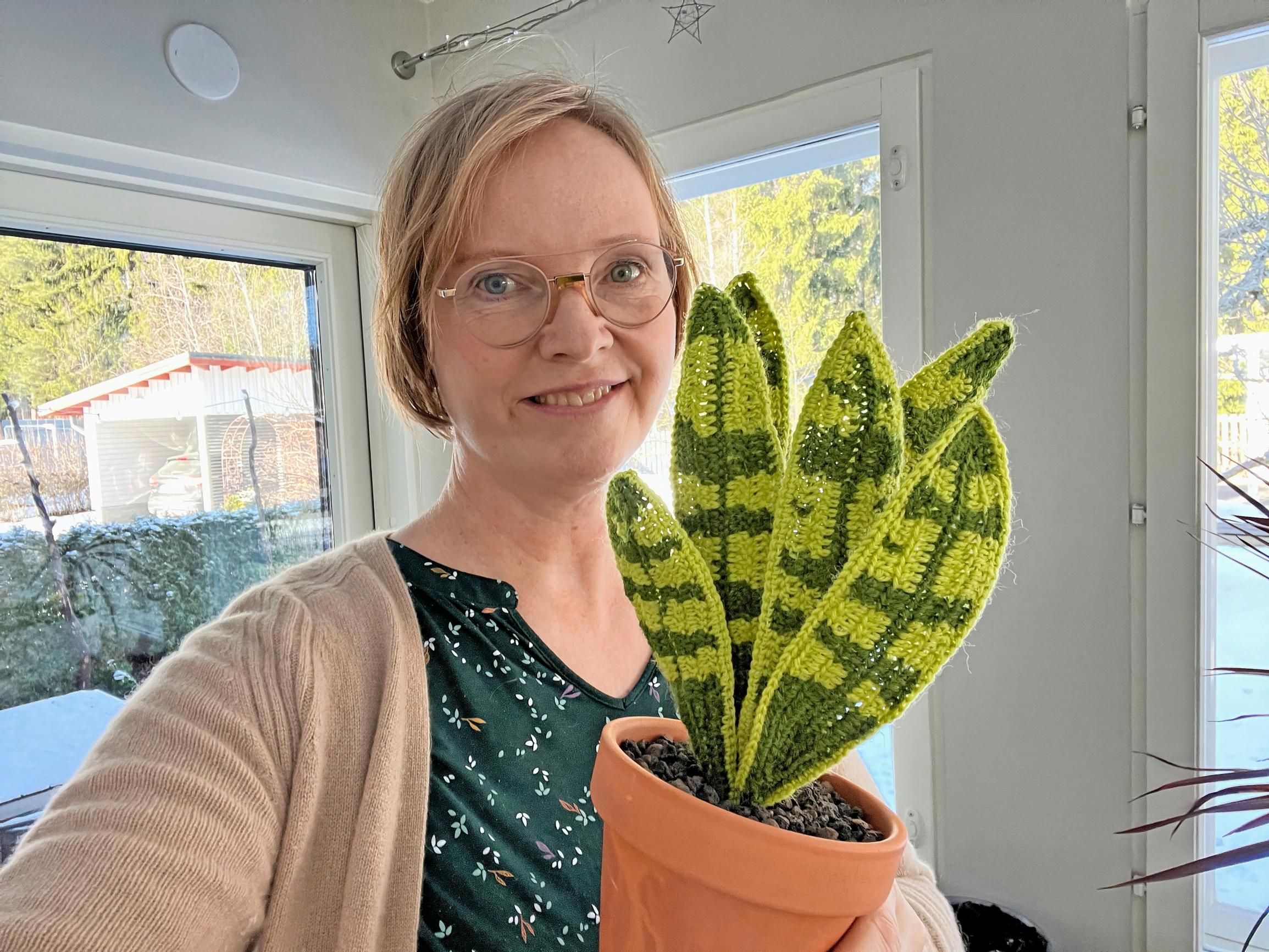
How is making plants different from crocheting a hat?
The leaves are supported by wire that you crochet around, which can be a bit challenging. I make the stems by wrapping wool or cotton yarn around wire covered in floral tape. How much support the leaves need depends on the plant, so you only find the right gauge by experimenting.
I set the finished plant’s stems in concrete inside a yogurt cup. The leaves are heavy, but thanks to the concrete, they stay upright. I put the concrete lumps in pots that I fill with expanded clay. Finally, I look at my real plants to see how their leaves are arranged and position the crocheted leaves accordingly. It requires meticulous work to make the result appear natural.
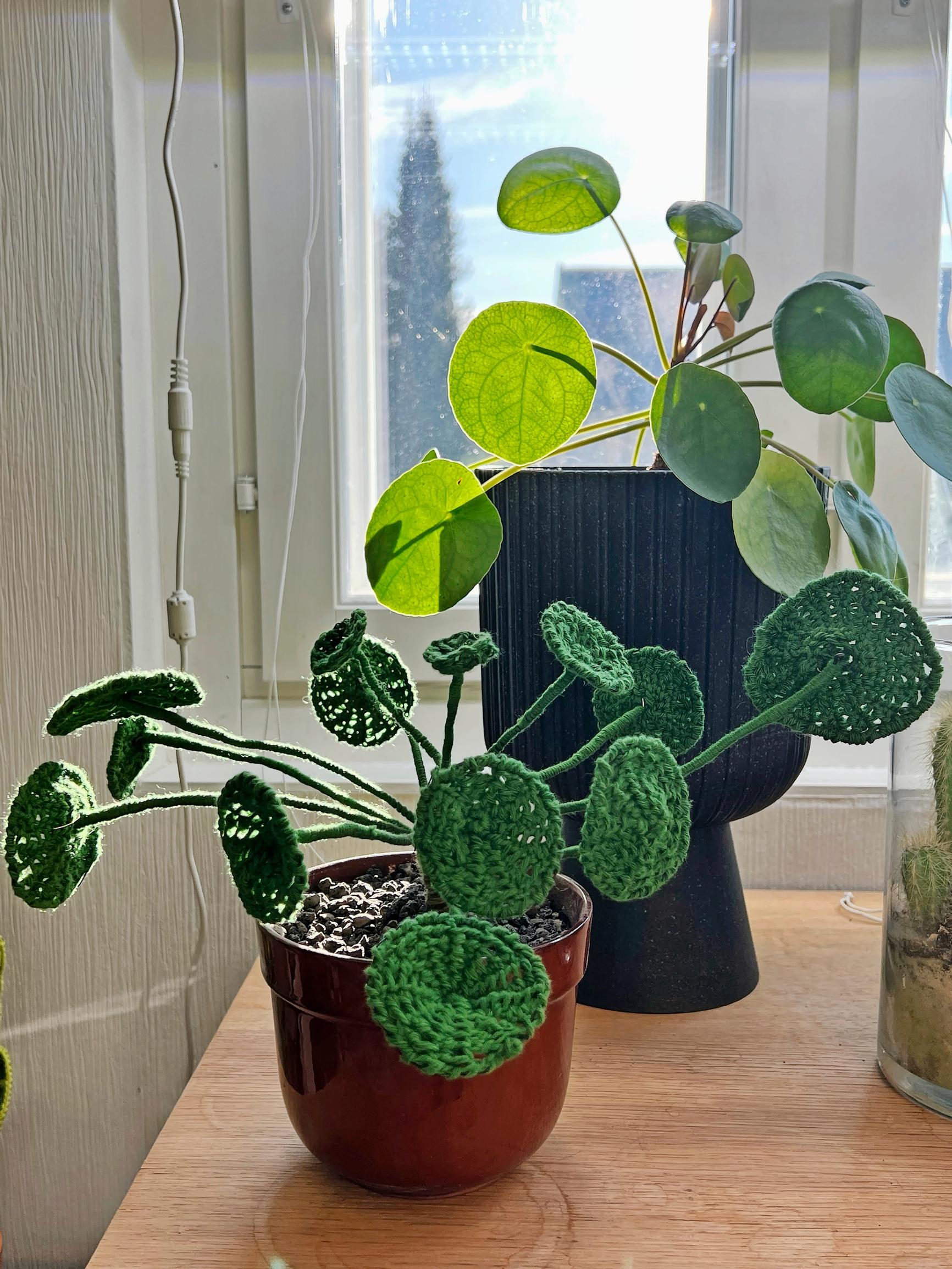
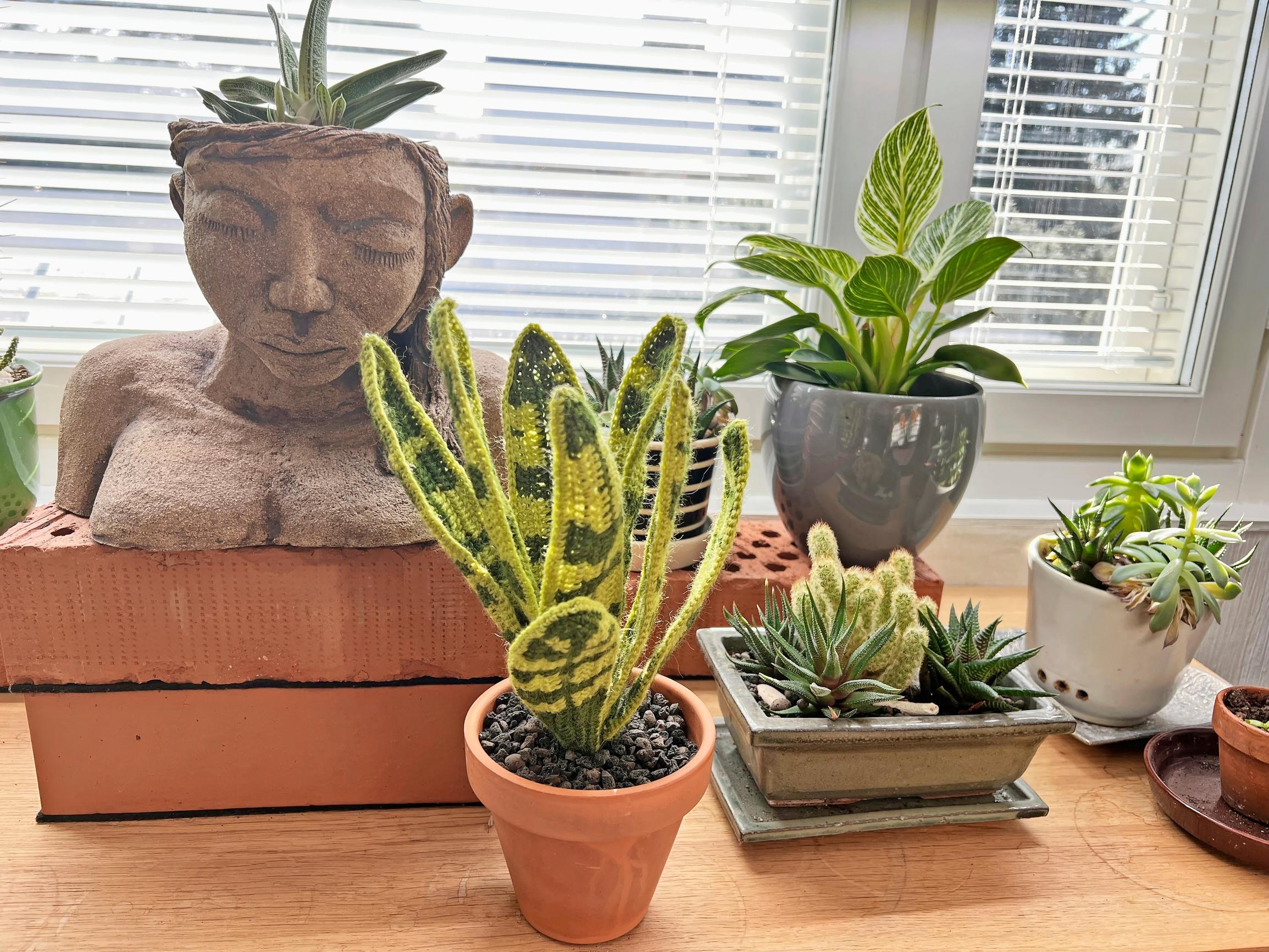
The plants look real—how do you do it?
You can’t make a plant by crocheting twenty identical leaves. For example, I wanted to copy a variegated monstera, where each leaf has its own color pattern. Once you know how to crochet one leaf, you don’t have to stick to the instructions exactly. Every plant is different, so it’s fine if a leaf is a little crooked or a different size.
They turned out so lifelike that sometimes, as I’m walking around with my watering can, I think I should water them, too.


